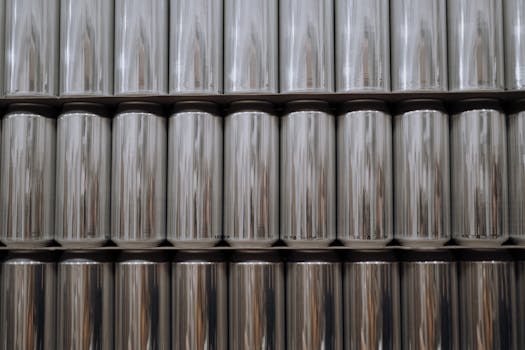
**
Revolutionizing Frozen Food: A Deep Dive into Packaging Materials and Considerations
The frozen food industry is booming, offering consumers convenience and preserving the nutritional value of fresh produce and prepared meals. But behind the delicious contents lies a crucial component often overlooked: the packaging. Choosing the right frozen food packaging is not just about aesthetics; it's paramount for maintaining product quality, extending shelf life, ensuring food safety, and minimizing environmental impact. This comprehensive guide delves into the key materials and considerations involved in the world of frozen food packaging.
Key Materials in Frozen Food Packaging: A Comparative Analysis
Several materials dominate the frozen food packaging landscape, each with its strengths and weaknesses. Choosing the right one depends on factors like product type, budget, and sustainability goals.
1. Plastic Films: The Workhorse of Frozen Food Packaging
Plastic films, particularly polyethylene (PE) and polypropylene (PP), are ubiquitous in frozen food packaging. Their flexibility, cost-effectiveness, and excellent barrier properties against moisture, oxygen, and vapor make them ideal for protecting frozen goods.
Polyethylene (PE): A widely used, relatively inexpensive material known for its flexibility and good barrier properties. Low-density polyethylene (LDPE) is commonly used for flexible pouches, while high-density polyethylene (HDPE) is often seen in rigid containers. HDPE is also recyclable, making it a more sustainable option.
Polypropylene (PP): Stronger and more resistant to temperature fluctuations than PE, making it a good choice for frozen foods subjected to significant temperature changes during transportation and storage. PP is also recyclable.
Oriented Polypropylene (OPP): Offers superior strength and clarity, making it ideal for packaging that needs to showcase the product. Often used in combination with other films for enhanced barrier properties.
2. Aluminum Foil: Superior Barrier Protection for Extended Shelf Life
Aluminum foil provides an exceptional barrier against moisture, oxygen, and light, resulting in extended shelf life and improved product quality. It's often laminated with other materials like PE or PP to enhance flexibility and printability. Aluminum foil is excellent for preserving the flavor and color of sensitive frozen foods.
3. Paperboard: Sustainable Choice with Limitations
Paperboard, particularly coated varieties, offers a sustainable alternative to plastic. However, its barrier properties are inferior to plastic and aluminum foil, meaning it often requires lamination with plastic films to provide adequate protection against moisture and oxygen. Recyclable paperboard options are growing in popularity. The use of sustainable paperboard packaging is a key trend in the industry.
4. Bioplastics: The Future of Sustainable Frozen Food Packaging?
Bioplastics, derived from renewable resources like corn starch or sugarcane, are gaining traction as a more environmentally friendly option. While not yet as widely used as traditional plastics, bioplastics offer comparable barrier properties in some cases and are biodegradable or compostable, reducing landfill waste. However, their cost and availability are current limiting factors.
Crucial Considerations in Frozen Food Packaging Selection
Beyond the material itself, several other factors need careful consideration:
1. Barrier Properties: Protecting Against Degradation
The packaging must effectively prevent moisture, oxygen, and vapor from penetrating, preventing freezer burn, oxidation, and microbial growth. This is critical for maintaining product quality and extending shelf life. The importance of a strong barrier against freezer burn cannot be understated.
2. Temperature Resistance: Withstanding Freezing and Thawing Cycles
The packaging must withstand the extreme temperatures involved in freezing, storage, and transportation without compromising its integrity. This ensures the product remains protected throughout the supply chain.
3. Sealability: Maintaining Product Freshness
Proper sealing is crucial for preventing contamination and maintaining product freshness. The packaging material should be compatible with various sealing methods like heat sealing or adhesive sealing.
4. Printability: Clear and Appealing Product Branding
The ability to print high-quality graphics and information on the packaging is important for brand recognition and consumer appeal. High-resolution printing is essential for attractive packaging design.
5. Sustainability: Minimizing Environmental Impact
The increasing demand for sustainable packaging is driving the industry toward eco-friendly materials and practices. Recyclable, compostable, or biodegradable packaging is becoming increasingly important to environmentally conscious consumers.
6. Cost-Effectiveness: Balancing Quality and Affordability
While quality is paramount, cost remains a significant factor. Manufacturers must balance the need for high-performing packaging with budgetary constraints.
7. Food Safety Regulations: Compliance and Certification
Packaging materials must comply with relevant food safety regulations and standards to ensure the safety and integrity of the product. Proper certifications are essential.
The Future of Frozen Food Packaging: Innovation and Sustainability
The frozen food packaging industry is constantly evolving. Innovations in materials science, printing technology, and sustainable practices are shaping the future of how we package our frozen goods. The focus is increasingly shifting towards recyclable and biodegradable materials, smart packaging technologies, and reduced plastic usage. The adoption of sustainable packaging solutions is not just a trend; it's a necessity for the long-term viability of the industry. By carefully considering these key materials and factors, manufacturers can ensure their frozen food products reach consumers in optimal condition while minimizing their environmental footprint.



















